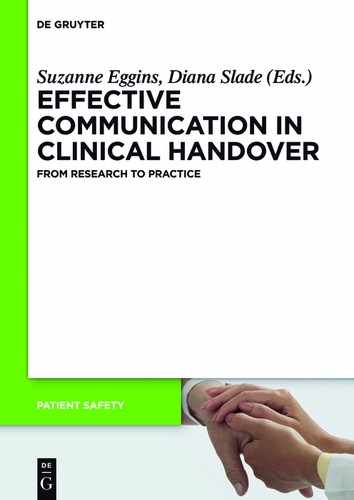Preface
The front page of a major Australian newspaper recently reported on the familiar theme of the crisis in the public hospital system:
Emergency departments are overwhelmed by huge numbers of seriously ill patients, with doctors saying the system cannot cope unless hospitals are given more beds and more funding. The latest report from the Bureau of Health Information shows patient numbers have risen by 25% over the past five years, while the time taken to treat some of the most seriously unwell has increased … 15% of all ambulances get stuck in ‘bed-block’ where the hospital is too full to take their patients. (Sydney Morning Herald, September 2nd 2015; front page)
This local story mirrors the challenges faced by healthcare systems around the world, where the number and complexity of patient presentations, ever rising rates of comorbidities and aging populations are putting enormous pressures on healthcare funding, personnel and policy.
However, equally worrying is what happens to patients once they progress past bed-block and are admitted to a hospital. The overall rate of patient harm in hospitals is 10% in developed countries and many times higher in developing nations (WHO 2014). In some developed countries patients are 40 times more likely to die as a result of being admitted to an acute care hospital than in a traffic accident (Runciman & Moller 2001).
One recognized contributor to patient harm in hospitals is ineffective communication, both between clinicians and between clinicians and patients. Misunderstandings, misinformation, illegible documents, omissions and failures to clarify ambiguities and confusions are a particular risk in the process called clinical handover (or handoff in North America). One of the most frequent of routine clinical activities, clinical handover refers to ‘the transfer of professional responsibility and accountability for some or all aspects of care for a patient, or group of patients, to another person or professional group on a temporary or permanent basis’ (AMA 2006). Despite many excellent international policy initiatives to improve healthcare communication generally, and communication in clinical handover in particular, there is little evidence that communication practices are becoming safer.
In this book we present the empirical outcomes and practical communication tools developed from a three-year multidisciplinary project called Effective Communication in Clinical Handover (ECCHo). The ECCHo project builds on methododology and research by some of the contributing authors on communication between clinicians and patients in emergency departments (Slade et al. 2015a).
The ECCHo research was carried out across four states of Australia and involved a multidisciplinary team of doctors, nurses, allied health professionals, health academics, human factors specialists, policy makers and communication professionals and linguists. The project involved both qualitative and quantitative data collection.
Our qualitative work involved 2,000 hours of observations of actual handover events in hospitals around Australia, 112 interviews with hospital and health department staff, 829 video and/or audio recorded spoken handover interactions, 15 audio-recordings of targeted patient journeys and an extensive audit of written handover documentation. We collected data of nursing, medical and interprofessional handovers in a range of hospital contexts, including in emergency departments, general medical, high dependency and acute care wards. We collected different types of handovers, including ward round, ward-to-ward and shift-change handovers and handovers during the transfer of patients from rural and remote locations to metropolitan hospitals. The patients handed over included patients with mental health issues, patients needing acute care and patients with multiple co-morbidities.
The quantitative component of the ECCHo project consisted of a multi-site survey completed by 707 clinicians – doctors, nurses and allied health professionals. Each of these data sets provided one perspective on the complex picture of clinical handover. Together, the empirical data gave us a rich, comprehensive and unique account of contemporary clinical handover practices. The range and diversity of the project’s data makes it one of the largest studies internationally on communication in clinical handover.
Working with this multi-faceted corpus, in the first phase of the project we analyzed the spoken, written and non-verbal communication used during clinical handovers and surrounding interactions, and we identified themes and insights from the interview and survey data.
In the second phase of the project we translated the research findings into tools for healthcare professionals. As a team we are committed to research that results in practical strategies, protocols, tools and policy suggestions grounded in the analysis of empirical data of healthcare communication in actual contexts. This commitment explains the structure of the book: research chapters are followed by related resource chapters.
The ECCHo team would like to thank all the health department staff, hospital management, clinicians and patients who supported our research and allowed us to observe and record them. All participants were generous and inclusive and willingly shared their experiences and insights with the members of our research team. We recognize the extreme pressures clinicians work under and we were at all times profoundly impressed by their dedication and professionalism.
Suzanne Eggins, Fiona Geddes and Diana Slade
University of Technology Sydney and Curtin University Western Australia
International Research Centre for Communication in Healthcare (IRCCH)
September 2015
